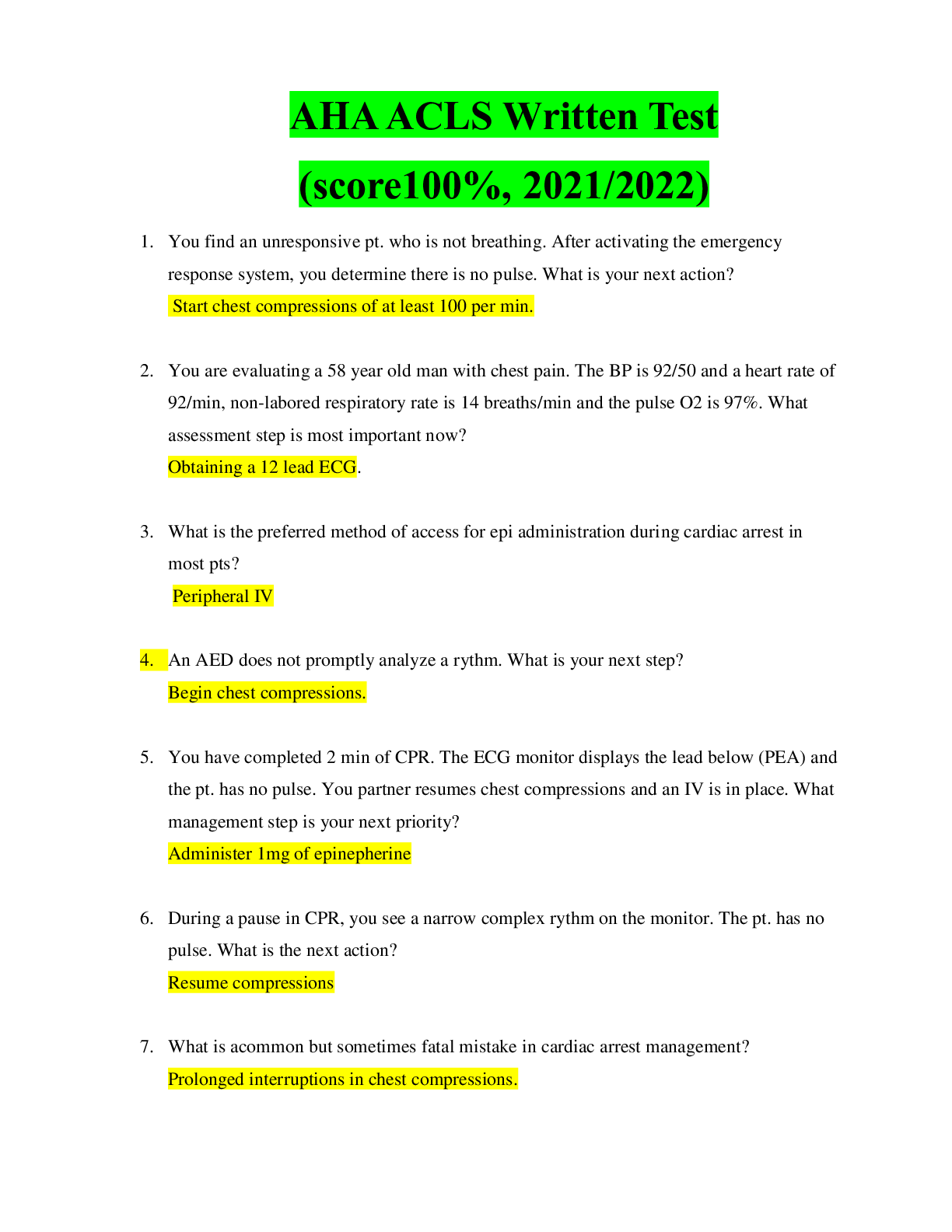*NURSING > STUDY GUIDE > NR507 Week 4 Mid-Term Study Guide. (All)
NR507 Week 4 Mid-Term Study Guide.
Document Content and Description Below
NR-507 Mid-Term Study Guide Hello Class, This study guide is for the 50 question multiple choice Mid-Term exam that will be given during Week 4. It will cover the following concepts: Pulmonary: re... view concepts related to anticholinergic drugs and the treatment for asthma, bronchitis and associated pathogenesis; We are now ready to address the pathogenesis of chronic bronchitis which begins with some sort of exposure to airborne irritants which activates bronchial smooth muscle constriction, mucus secretion, and release of inflammatory mediators (histamine, prostaglandins, leukotrienes, interleukins) from immune cells located in the lamina propria These airborne irritants can include air pollution or industrial chemicals & fumes. But the most common irritant is smoke from cigarettes and other tobacco products. Keep in mind that all of these bronchial responses are, in fact, normal responses to occasional inhalation of airborne irritants. Smooth muscle constriction is important to limit passage of the irritant deeper into the respiratory tract. Secretion of mucus and release of inflammatory chemicals are also important to help trap and defend against a potential harmful substance. The transition from a normal, protective respiratory response to a detrimental effect occurs with …. long-term exposure to airborne irritants which promotes smooth muscle hypertrophy à increased bronchoconstriction hypertrophy and hyperplasia of goblet cells à mucus hypersecretion epithelial cell metaplasia à non-ciliated squamous cells migration of more WBCs to site à inflammation & fibrosis in bronchial wall thickening and rigidity of bronchial basement membrane à narrowing of bronchial passageways chronic bronchitis and related acid/base disturbances, Because of the anatomical changes in the bronchioles associated with chronic irritation ventilation, especially exhalation, is compromised. Pressure differences during inhalation are high enough to force air into the alveoli. However, during exhalation the narrowing and collapse of the air passageways causes air to be trapped in the alveoli resulting in. alveolar hyperinflation à expanded thorax hypercapnia (CO2 retention) à respiratory acidosis What is chronic bronchitis? This is a chronic disease characterized by: bronchial inflammation, hypersecretion of mucus, and chronic productive cough, persisting for at least 3 consecutive months for at least 2 successive years Chronic bronchitis is caused by: long-term exposure to environmental irritants, repeated episodes of acute bronchitis (infection), and factor(s) affecting gestational or childhood lung development – the most common being pre-term birth and/or RSV infection in early infancy Chronic bronchitis results in: excess mucus production and accumulation, hypertrophy of bronchial smooth muscle, hypertrophy & hyperplasia of bronchial mucus-producing cells, airflow obstruction, and decreased alveolar ventilation The lung damage from chronic bronchitis is typically considered irreversible. The most common symptoms of chronic bronchitis are: productive, purulent cough copious sputum production shortness of breath wheezing, rhonchi – sounds typically associated with fluid/mucus in the airways cyanosis – bluish discoloration of the skin and mucous membranes associated with poor oxygenation peripheral edema perfusion, he high concentration of CO2 creates unfavorable conditions for gas exchange, so there is decreased O2 exchange à ventilation/perfusion (V/Q) mismatch Decreased perfusion of the pulmonary capillaries with oxygenated blood results in chronic pulmonary hypoxia à cyanosis (the term “blue bloater” used to describe a client with chronic bronchitis, with bloater referring to the expanded thorax that these individuals can develop as a result of alveolar hyperinflation) Poor ventilation, leading to decreased perfusion, causes Right to Left “shunting” to occur. This is the phenomenon where deoxygenated blood passes from the RV to lungs to the LV without adequate perfusion (gas exchange) Perfusion, the actual exchange of O2 and CO2 in the bloodstream, occurs via the alveoli and pulmonary capillaries. Ventilation, air movement in/out of the lung, is critical to ensure sufficient perfusion. blood flow between the heart and lungs, Blood enters the heart through two large veins, the inferior and superior vena cava, emptying oxygen-poor blood from the body into the right atrium. ... As the ventricle contracts, blood leaves theheart through the pulmonic valve, into the pulmonary artery and to the lungs where it is oxygenated.Feb 4, 2019 asthma signs and symptoms, The most common symptoms of both extrinsic and intrinsic asthma are: coughing, wheezing shortness of breath rapid breathing chest tightness, difficulty breathing/ bronchioles, After air enters the nasal and/or oropharynx it passes into the trachea which branches into Left & Right bronchi, which further divide into smaller passageways called the bronchioles, and finally almost 30 branch points later, form the actual gas exchange areas called the alveoli The bronchioles or bronchioli are the smaller branches of the bronchial passageways in the respiratory tract that deliver air to the smaller terminal bronchioles in the conducting zone, and even smaller respiratory bronchioles in the respiratory zone. The bronchioles no longer contain the cartilage, that is found in the bronchi, or glands in their submucosa [Show More]
Last updated: 1 year ago
Preview 1 out of 25 pages
Instant download
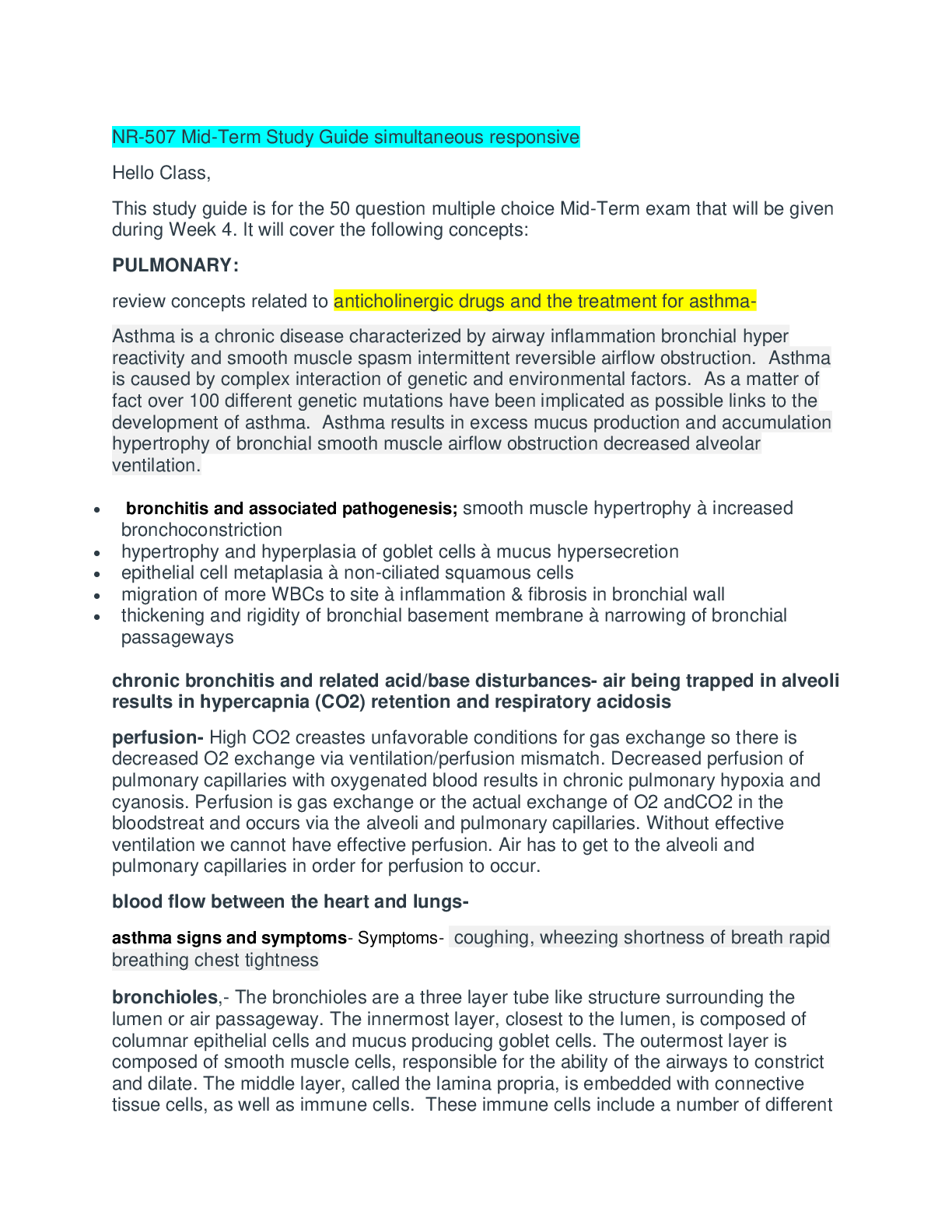
Buy this document to get the full access instantly
Instant Download Access after purchase
Add to cartInstant download
Reviews( 0 )
Document information
Connected school, study & course
About the document
Uploaded On
Jul 30, 2021
Number of pages
25
Written in
Additional information
This document has been written for:
Uploaded
Jul 30, 2021
Downloads
0
Views
40

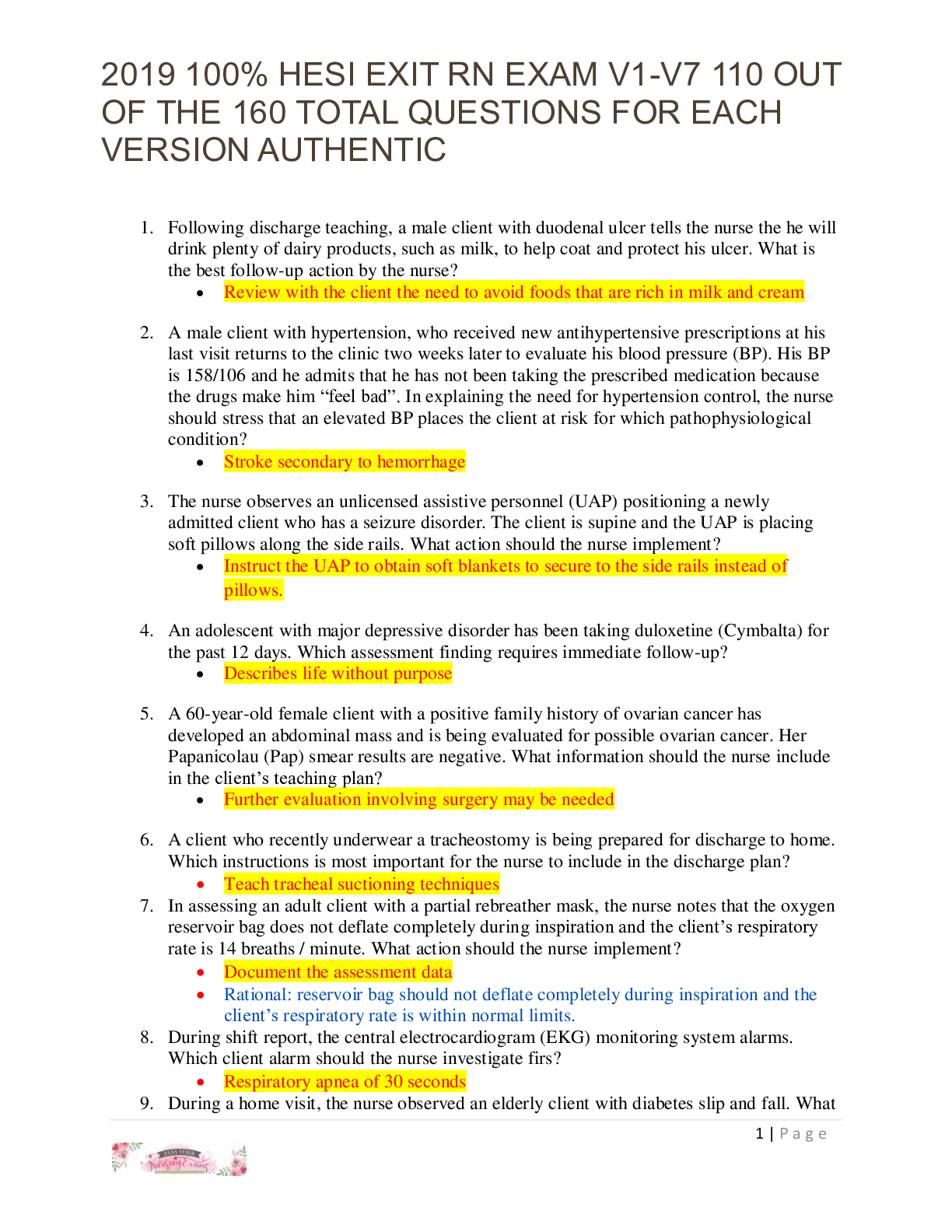

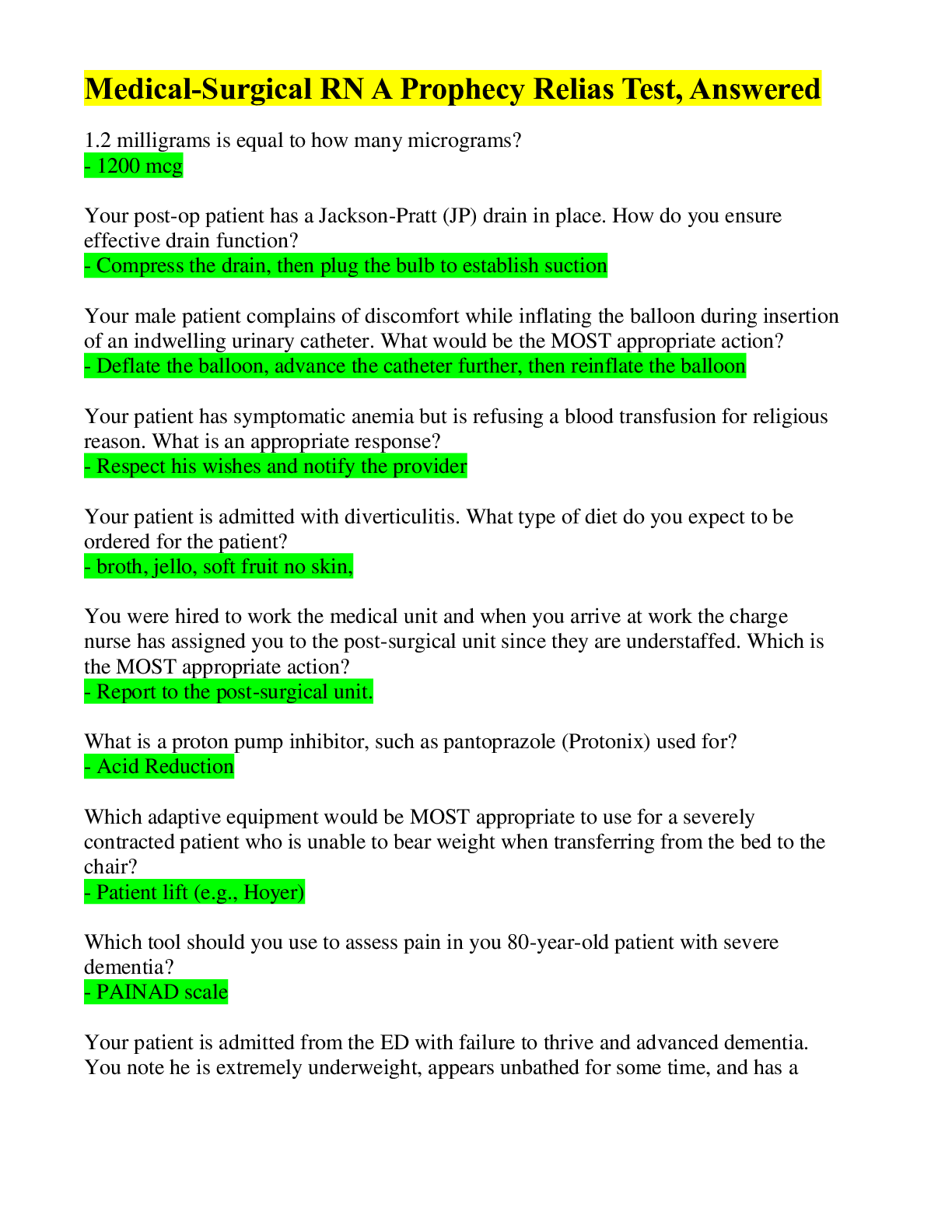

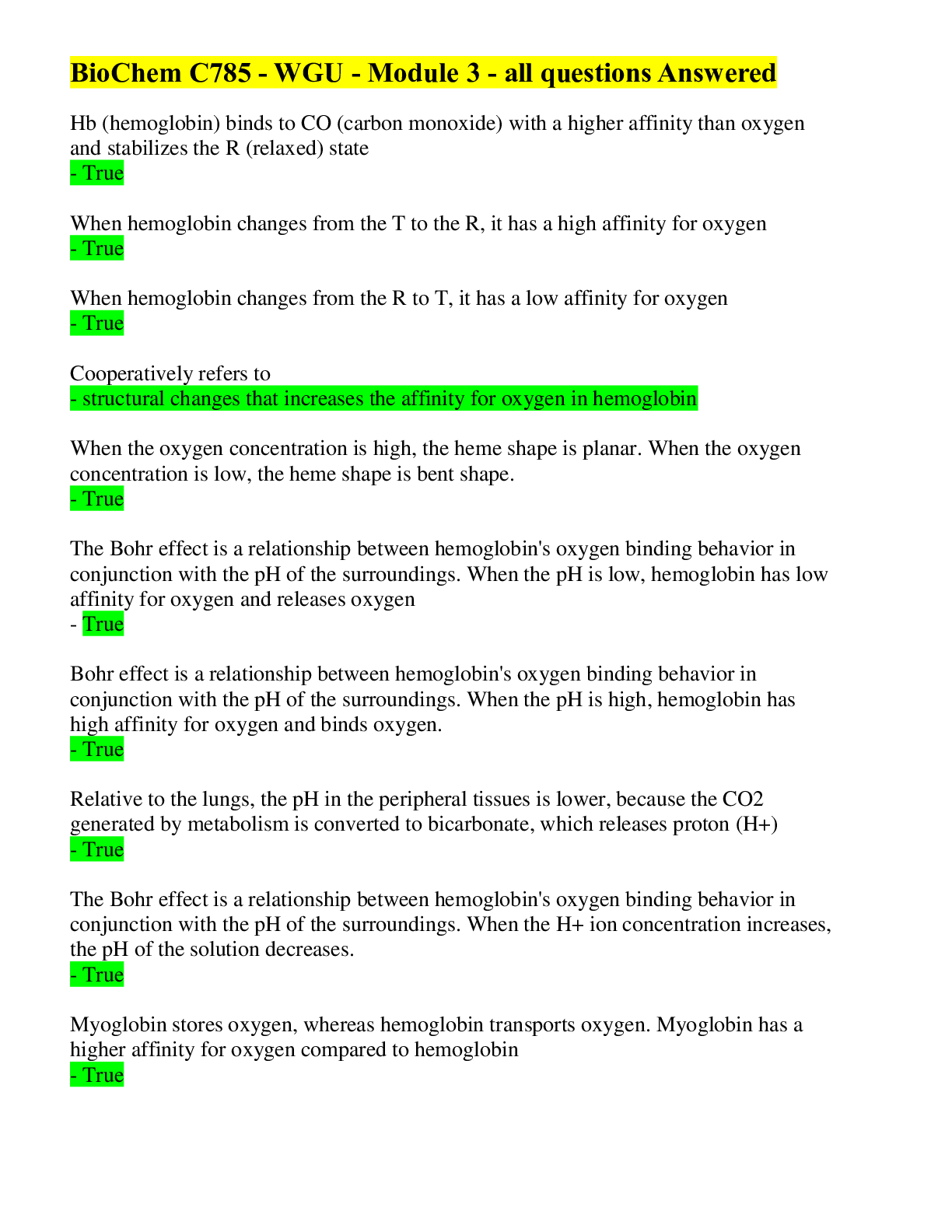


.png)
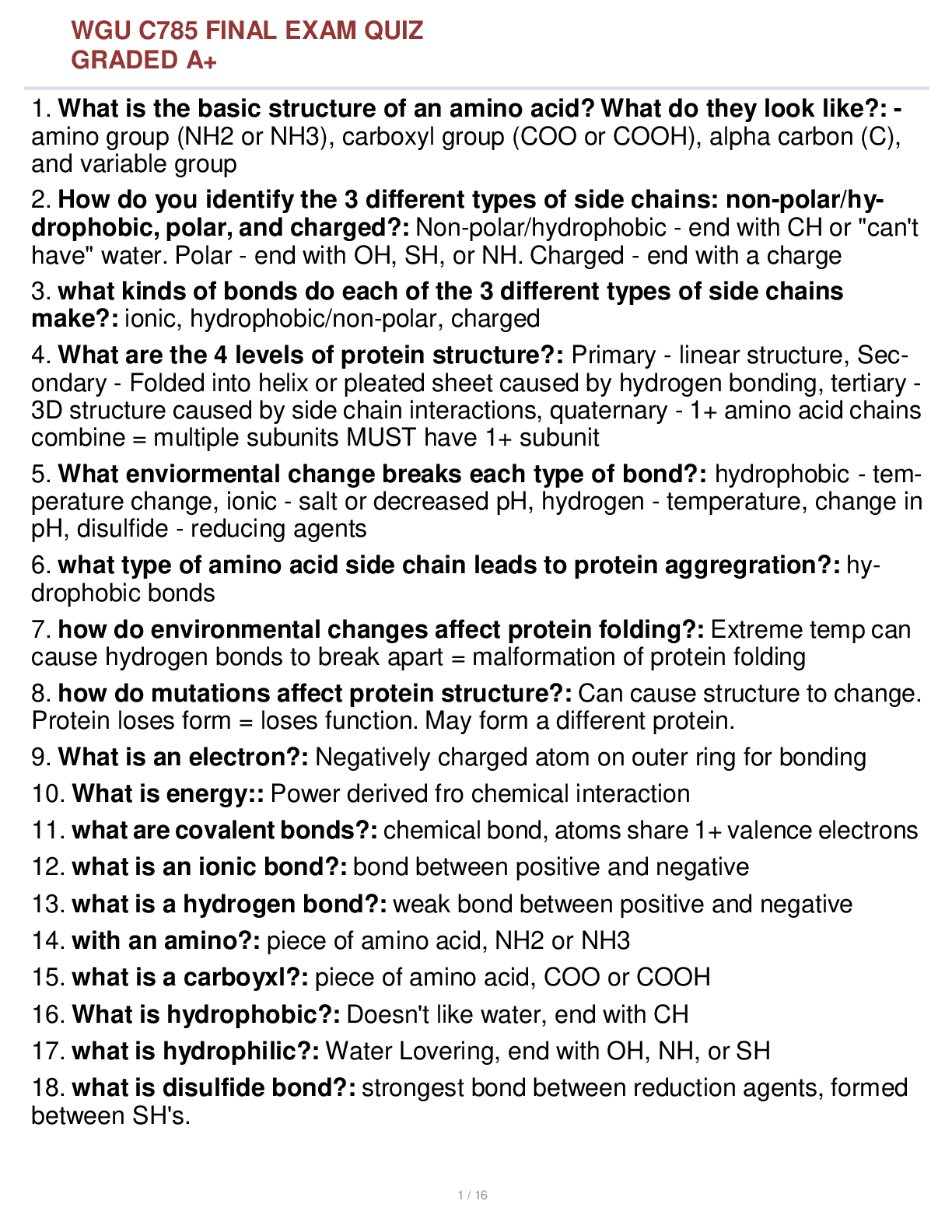
.png)
